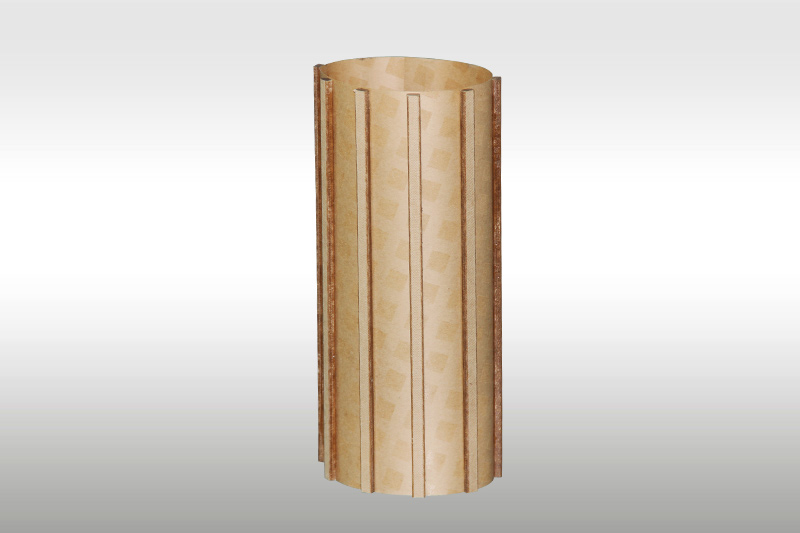What are the raw materials for electrical insulation?
Introduction to major raw materials
parts of the resin itself and supporting auxiliaries
The main part of the insulating resin insulating material which provides the main electrical, mechanical and thermal properties of the insulating material.
1. Epoxy Resin:
Where the molecular structure of the polymer compound containing Epoxy groups, collectively referred to as an Epoxy resin, generally colorless or pale yellow, liquid or solid. Epoxy resin has excellent adhesion strength, good dielectric properties, low shrinkage, good electrical performance stability, high hardness, flexibility, good stability to alkali and most solvents, which are widely used in various sectors for laminating materials, adhesives, coatings and other uses. The field of power generation, transmission and distribution of electricity are required to produce epoxy insulating material.
2. Phenolic resin
Phenol and formaldehyde under acidic or alkaline catalyst, by polycondensation reaction of polymer resin, commonly known as Phenolic resin. Appearance may be colorless and transparent, yellow or brown as a solvent is generally without a solid state. Different phenol, aldehyde, catalyst. Different molar ratio of phenol and formaldehyde to produce a variety of phenolic resin, comprising: a thermoplastic novolak resin, a thermosetting phenolic resin; soluble phenol resins, water-soluble phenolic resin. A large number of phenolic resin used to manufacture insulation materials, plywood, molding etc.; insulation materials industry is mainly used for the production of plastics and pressure laminated products, insulating paint, etc.
3. Polyester resin
The polyester resin is a dicarboxylic acid (or dimethyl ether) and the polyhydric alcohol, after direct esterification (PTA method) and an ester exchange method (DMT method) polymer obtained by the process, typically a thermoplastic resin, a small amount of are thermosetting; uses polyester resin is very wide, in addition to polyester fiber, various types of containers, packaging materials, films, film, engineering and other fields, the extensive use of; up to our daily contact with the various types of beverage bottles and polyester fibers clothing; insulating materials used in the manufacturing industry more electrical polyester film, nonwoven and DMD composite products, as well as wire paint.
4. Unsaturated polyester resin
Unsaturated polyester resin is a polyhydric alcohol and a polybasic acid (anhydride), polyunsaturated acids (anhydrides) polycondensation polymer compound of the general, and is fundamentally different from a polyester resin, a thermosetting resin, a curing initiator double bonds; can be mixed with vinyl monomers such as styrene, acrylates, vinyl esters such as the acetate, in the role of initiator and accelerator, the polymerization at room temperature into an insoluble, infusible product. Up is our daily contact with all kinds of glass fiber reinforced
plastic products, such as boat park, amusement equipment, etc.; insulation material manufacturing industry to use more insulation moldings, panels, Stubbs, non-wai, as well as insulation impregnated with resin.
5. alkyd resin
Polyhydric alcohols, phthalic anhydride and a fatty acid or oil (fatty acid triglycerides) condensation polymerization of oil-modified polyester resins, alkyd resins generally known; insulating material is mainly used to make cloth insulation varnish and cloth..
resins and other ancillary aids
Insulating resin addition to the above, there are polyurethane resin, ether resin, a polyamide-imide resin, a polyester-imide resin, an amino resin, a silicone resin, a benzoxazine resin, and the insulating resin with additives;
The molecular structure of the resin and the manufacturing process more complicated, a relatively higher price, the amount of smaller, more variety to the excellent insulating material or special properties, such as polyamide-imide resin used for the initial development of the project moon, amino resins provide good high-pressure arc resistance capability, benzoxazine resins provide excellent high-temperature flame retardant function, which represents the direction of the insulation materials industry to develop better varieties of products, such as national industrial progress to a certain extent, When manufacturing costs are no longer required so harsh, high-performance resin material consumption is bound to increase.
Additives include catalysts, curing agents, toughening agents, mold release agents, plasticizers, special coloring, etc., together with the base resin constituting the insulating material of the core system.

Auxiliary Materials
1. solvents and thinners
Solvents and thinners in general are: toluene, methanol, ethanol, styrene, acetone, ethyl acetate, xylene, formamide, are generally flammable, be sure to keep away from flame when used .And also do pay attention to your personal safety.
2.Reinforcements
Reinforcing materials are glass fibers, glass fibers and glass cloth, felt; natural organic fibers made of paper,cloth, silk, etc. Organic fibers made of paper and cloth . Widely used in Fiberglass cloth, cable paper and non- woven Polyester fabric.
3. Fillers
Insulating materials can be used with the filler, aluminum hydroxide powder, magnesium hydroxide powder, alumina powder, silica powder, calcium carbonate powder, except for the effect to a certain extent to reduce costs, but also inhibit the reaction heat make the product more stable manufacturing process, extend the use of resin, reduce stress concentration of the product, to improve flame retardant, thermal, weathering performance.

- more+releated article
- 2025-10-21Application of K Factor Transformer
- 2025-10-21Detailed explanation about transformer model w
- 2025-10-2010kV Oil-Immersed Transformer Safety: Lightnin
- 2025-10-20What are The Advantages of Phenolic Cotton Clo
- 2025-10-17Are Three-Phase Isolation Dry-Type Transformer
- 2025-10-17G10 Epoxy Sheet: Choosing the Right Specificat
- 2025-10-1610kV Oil-Immersed Transformer Operation Inspec
- 2025-10-163240-B Epoxy Phenolic Glass Fiber Cloth Lamina
- 2025-10-15G10 Epoxy Sheet: The Preferred Insulation Mate
- 2025-10-15Analysis of Energy-Saving and Noise Control Te





